
eBook - ePub
Sheep Ailments
Recognition and Treatment
Eddie Straiton
This is a test
Condividi libro
- 192 pagine
- English
- ePUB (disponibile sull'app)
- Disponibile su iOS e Android
eBook - ePub
Sheep Ailments
Recognition and Treatment
Eddie Straiton
Dettagli del libro
Anteprima del libro
Indice dei contenuti
Citazioni
Informazioni sul libro
Eddie Straiton is the world's outstanding communicator of veterinary procedures and animal care. He earned the title 'TV Vet' from the long series of television programmes in which he brilliantly demonstrated animal husbandry to a wide audience. Following on from his television experience, Eddie became a prolific author, and more than half a million copies of his books have been sold around the world. Now in its seventh edition, Sheep Ailments, Recognition and Treatment covers all the essential information that a flock owner, shepherd or student needs to know, featuring a concise, clear text based around a large number of specially-commissioned photographs.
Domande frequenti
Come faccio ad annullare l'abbonamento?
È semplicissimo: basta accedere alla sezione Account nelle Impostazioni e cliccare su "Annulla abbonamento". Dopo la cancellazione, l'abbonamento rimarrà attivo per il periodo rimanente già pagato. Per maggiori informazioni, clicca qui
È possibile scaricare libri? Se sì, come?
Al momento è possibile scaricare tramite l'app tutti i nostri libri ePub mobile-friendly. Anche la maggior parte dei nostri PDF è scaricabile e stiamo lavorando per rendere disponibile quanto prima il download di tutti gli altri file. Per maggiori informazioni, clicca qui
Che differenza c'è tra i piani?
Entrambi i piani ti danno accesso illimitato alla libreria e a tutte le funzionalità di Perlego. Le uniche differenze sono il prezzo e il periodo di abbonamento: con il piano annuale risparmierai circa il 30% rispetto a 12 rate con quello mensile.
Cos'è Perlego?
Perlego è un servizio di abbonamento a testi accademici, che ti permette di accedere a un'intera libreria online a un prezzo inferiore rispetto a quello che pagheresti per acquistare un singolo libro al mese. Con oltre 1 milione di testi suddivisi in più di 1.000 categorie, troverai sicuramente ciò che fa per te! Per maggiori informazioni, clicca qui.
Perlego supporta la sintesi vocale?
Cerca l'icona Sintesi vocale nel prossimo libro che leggerai per verificare se è possibile riprodurre l'audio. Questo strumento permette di leggere il testo a voce alta, evidenziandolo man mano che la lettura procede. Puoi aumentare o diminuire la velocità della sintesi vocale, oppure sospendere la riproduzione. Per maggiori informazioni, clicca qui.
Sheep Ailments è disponibile online in formato PDF/ePub?
Sì, puoi accedere a Sheep Ailments di Eddie Straiton in formato PDF e/o ePub, così come ad altri libri molto apprezzati nelle sezioni relative a Technik & Maschinenbau e Tierhaltung. Scopri oltre 1 milione di libri disponibili nel nostro catalogo.
Informazioni
Argomento
Technik & MaschinenbauCategoria
TierhaltungObstetrics
36 How Long Should Ewes be Kept?
Some time ago I asked a farming friend of mine – one of the most successful sheep farmers I know – how long he kept his ewes. He replied, ‘Until they have been dead at least three days.’ This laconic retort, to my mind, sums up the commonsense approach to successful sheep farming.
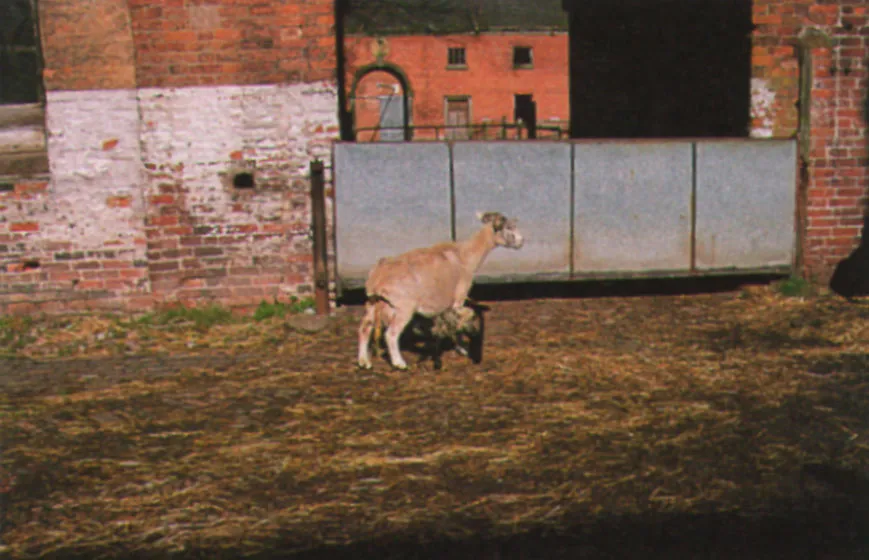
1
Provided the udder is sound and there has been no prolapse problems at the previous lambing, it is wise to keep the ewes as long as possible and that can mean many years. The ewe shown in photo 1 was 27 years old. She had had a crop of lambs every year for 24 years and her breeding career only came to an end when she required a Caesarean section.
The advantages of keeping these old ewes are obvious. Apart from the low capital outlay, the ewes acquire a powerful resistance against all the diseases encountered on that farm. For the same reason one should always breed one’s own replacements.
Bought-in sheep have little or no resistance to the resident local bugs and will take several years to settle down. This fact has been illustrated again and again during restocking.
37 Natural Lambing
It is easier to kill a ewe by lambing her prematurely or roughly than by shooting her with a humane killer. If you want to keep lambing losses to a minimum, the first basic fact to remember is that it always pays to give nature a chance.
Most ewes will lamb by themselves with no trouble whatsoever, as shown in the sequence of photographs that follows.

Appearance of the water bag. The lamb may or may not show.

Early signs. If the feet and head are presented, do not interfere.
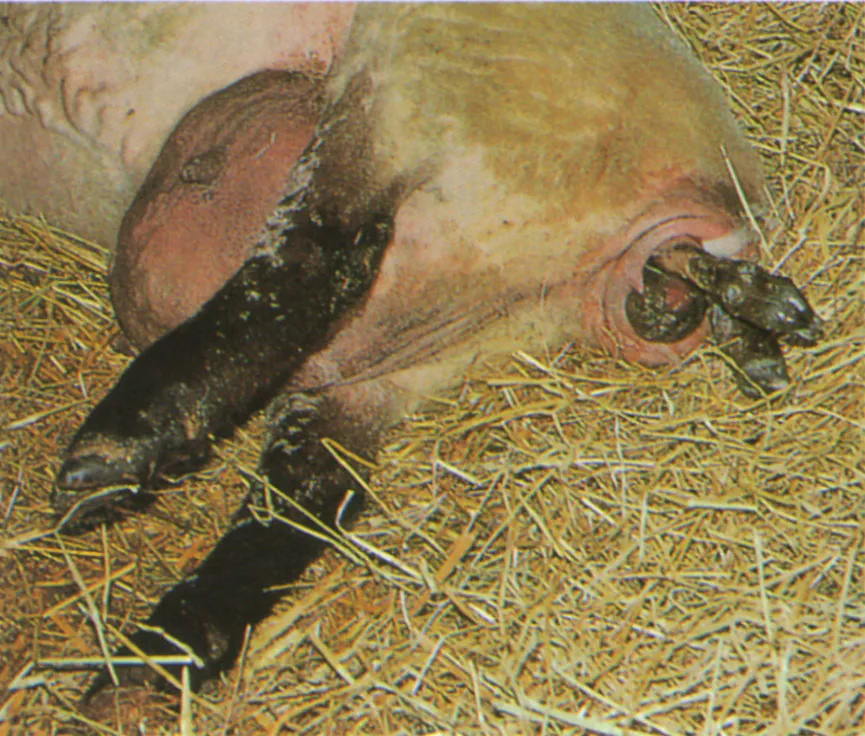
Rapid natural progress.

Head out and shoulders through the ewe’s pelvis.

Three-quarters of the way.

Nearly out.

The final push. A healthy live lamb.

If the ewe remains prostrate, she’s most likely having a second lamb. It is still wise to leave well alone.

The second lamb well on the way.
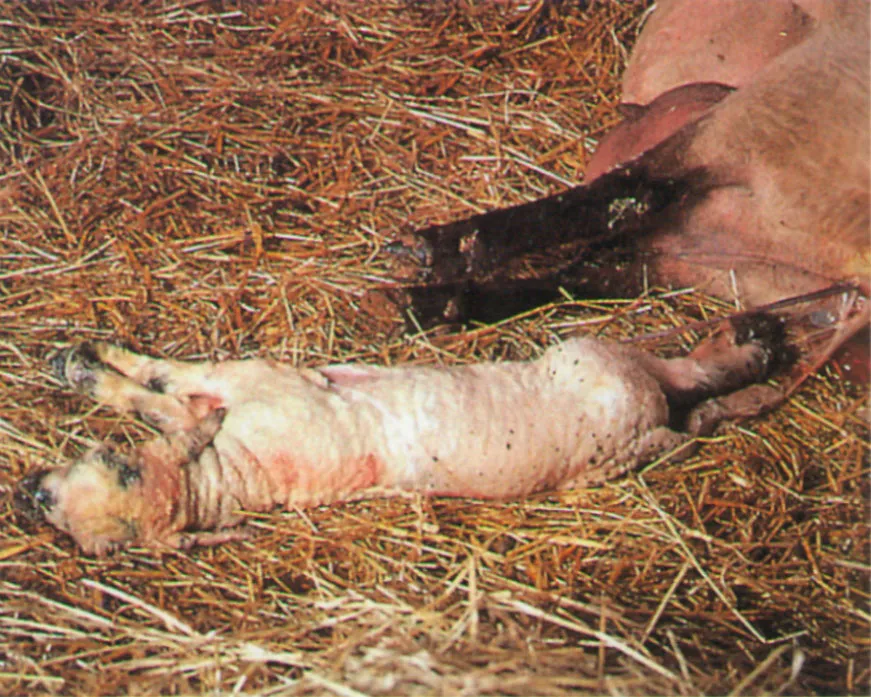
Birth of the second lamb.

The happy and healthy ending.
It is wrong to pull a lamb away quickly even when it is straight, because the sudden change in temperature and atmospheric pressure will often kill it. Every experienced shepherd has seen this happen: an apparently normal lamb is pulled away quickly – it takes one gasp and dies. Such death is due to shock.
This is a simple but nonetheless tremendously important point well worth bearing in mind. When the lamb is straight, never interfere unless the ewe ceases to make progress.
38 A Guide to Good Lambing
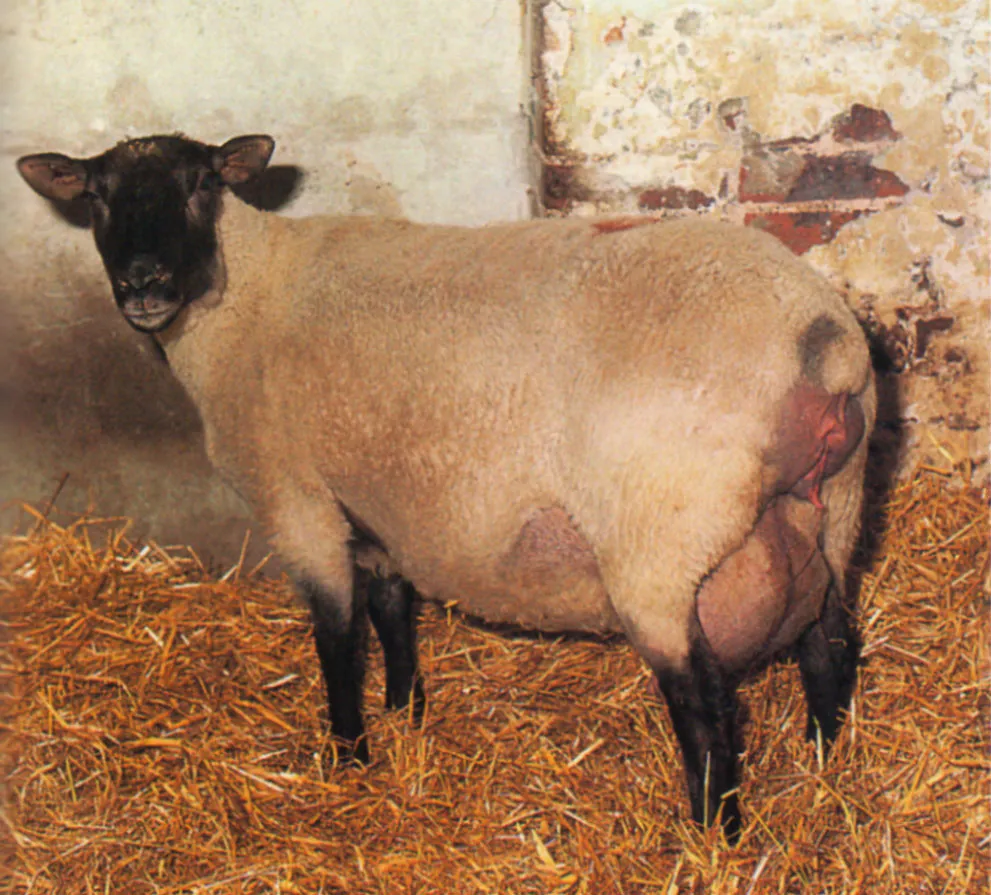
1
The percentage of malpresentations in the 2 ewe is comparatively small. In any case it is quite safe to leave a ewe in labour for at least 4 hours before examination (photo 1).
Apart from patience there are four golden rules at lambing time:
1. Cleanliness.
2. Getting the ewe into the correct position.
3. Lubrication.

2
4. Careful manipulation (photo 2).
Cleanliness

3
I know cleanliness in the field is not always easy, but I believe that, wherever possible, no examination should be attempted in the field. The suspect ewe should be loaded up and taken to the farm building (photo 3).
Transport is so easy on most farms that it’s ridiculous to attempt interference outside. At the building, the patient should be taken out, and prepared for examination on a clean bed of straw. And, of course, it is preferable and much more comfortable if the examination can be done under a roof.

4
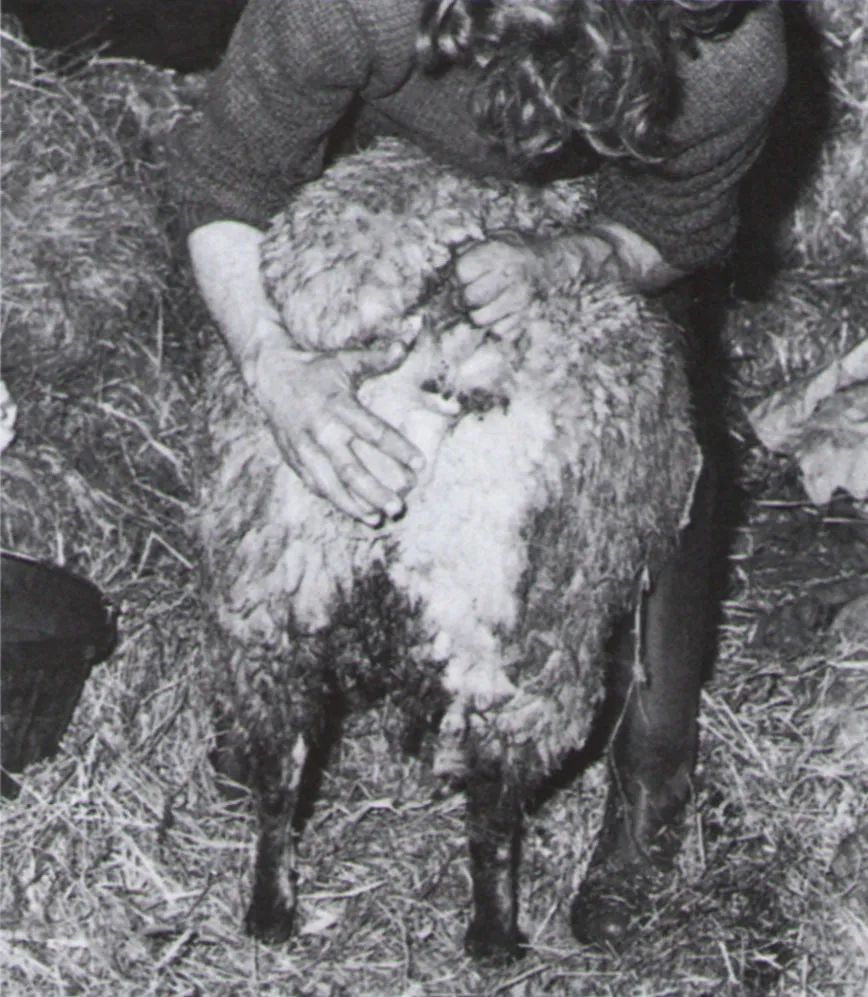
5
All the wool and dirt should be clipped from around the vulva (photo 4). This is a very useful hint, bec...